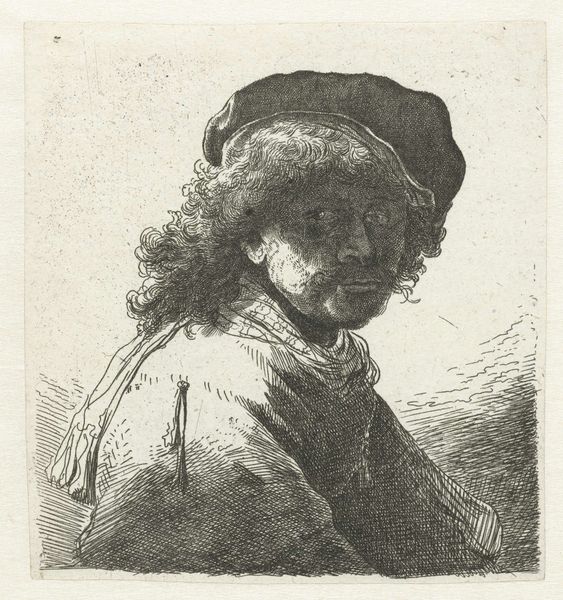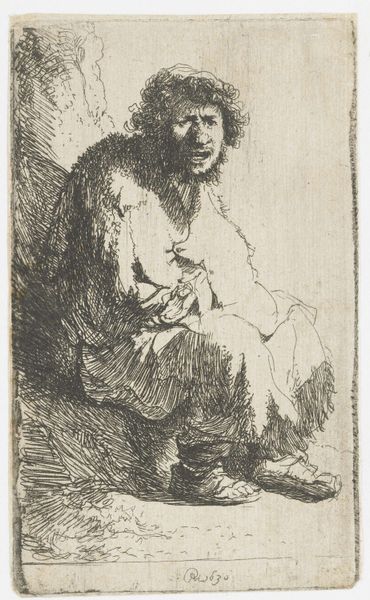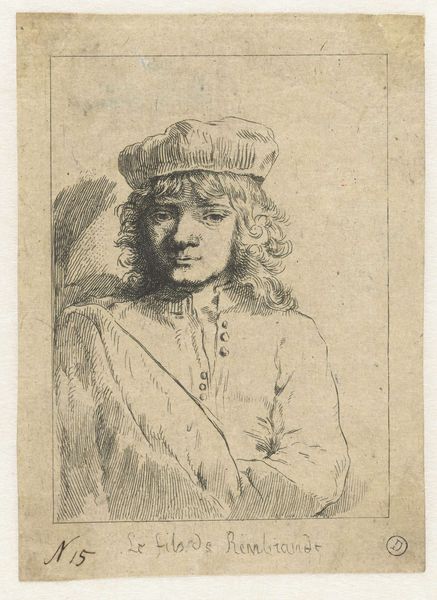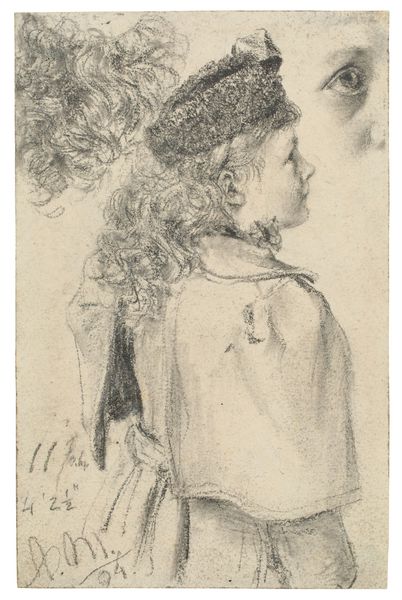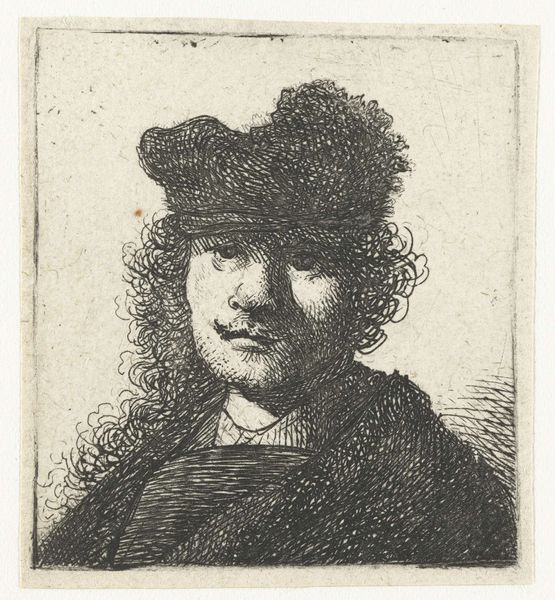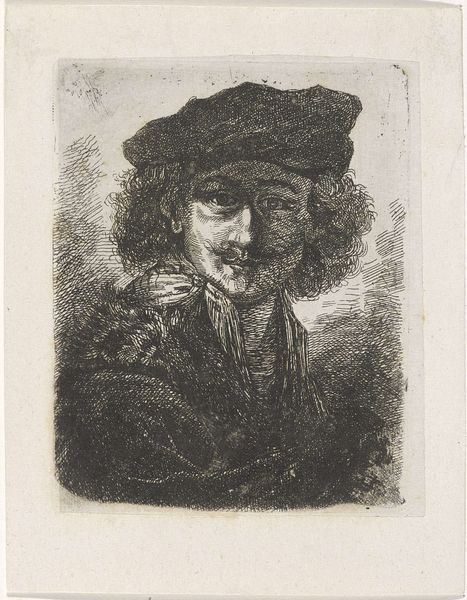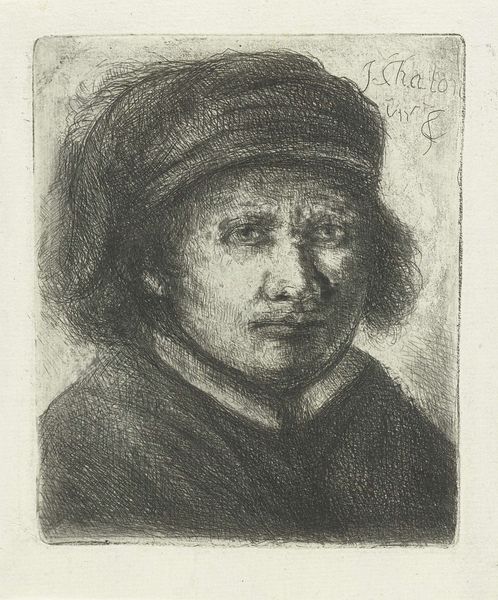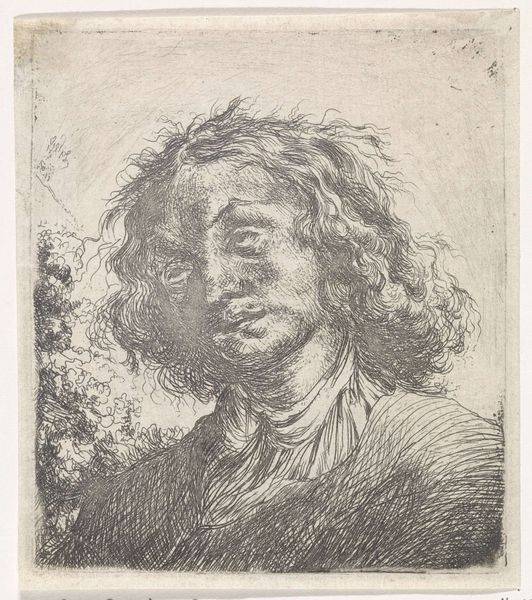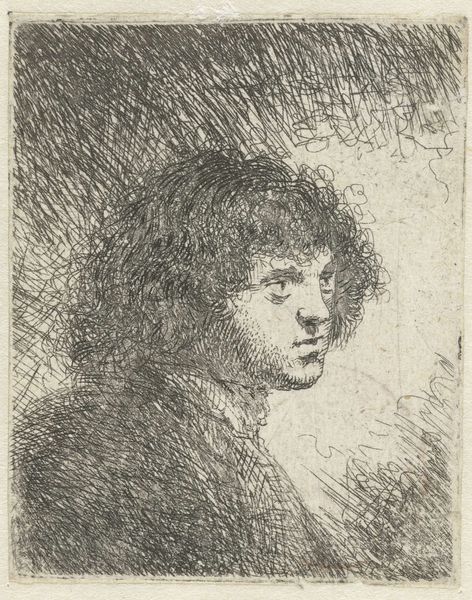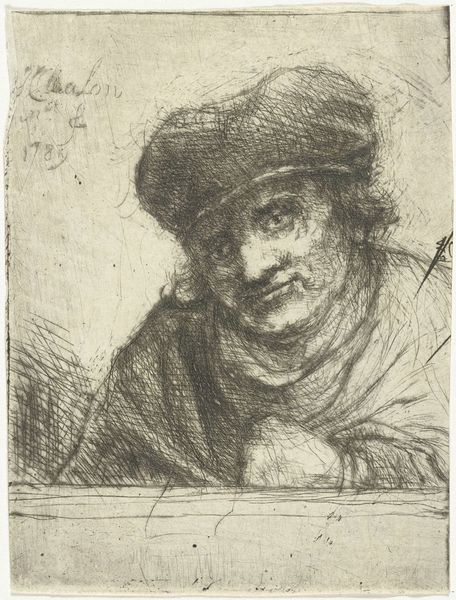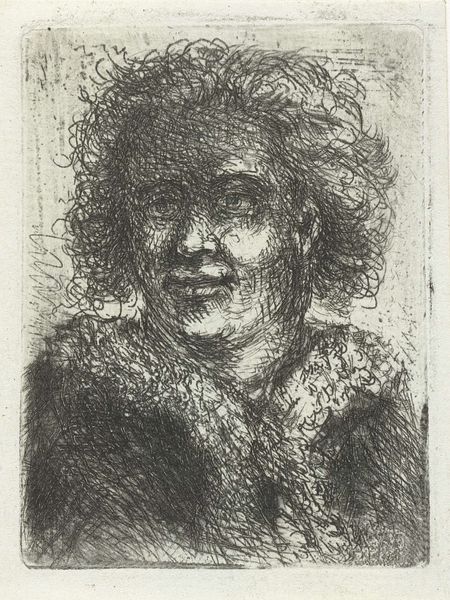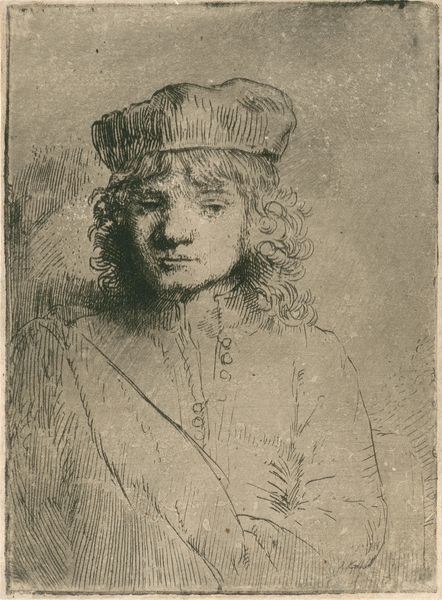
drawing, etching
#
portrait
#
drawing
#
self-portrait
#
baroque
#
etching
Dimensions: height 139 mm, width 119 mm
Copyright: Rijks Museum: Open Domain
Curator: Here we have Rembrandt van Rijn's "Self-portrait in a cap and scarf with the face dark: bust," created in 1633. It's currently held in the collection of the Rijksmuseum. Editor: Immediately, I’m struck by the interplay of light and shadow. It's quite somber, isn’t it? The deep shadows obscure much of his face. Curator: Indeed. This self-portrait, executed as an etching, showcases Rembrandt’s mastery of the medium. The etched lines aren't just descriptive; they actively model the form, creating a tangible sense of depth and texture. Editor: The cap and scarf themselves become almost symbolic, don't they? He shrouds himself, almost hiding, which speaks to a certain humility or even vulnerability. Think about the historical context – portraiture was a display of status, but here Rembrandt is, playing with concealment. Curator: Precisely! The deliberate obscuring invites inquiry into Rembrandt’s social standing as it relates to art-making and production in 17th-century Netherlands. The lines and cross-hatching used to render clothing suggest a kind of ready-made and easily available texture, contrasting to other details in the work. This brings to question how the materials speak for themselves in contrast to the high standing art of the time. Editor: I read it more as the inner life made visible. The cap softens the rigid conventions of dress; and the intense shadows seem to project not just his features, but also his very essence. His face—partially shrouded in darkness—seems to peer from a place of thoughtfulness. Curator: From a materials perspective, the choice of etching allowed Rembrandt to mass-produce these images, thereby increasing their circulation and impact on the art market of his time, an astute way to commodify his own image, isn’t it? Editor: True, but that widespread distribution reinforces his visual legacy. How many artists since have turned to Rembrandt’s use of chiaroscuro as a mode of communicating complex states of being? His self-fashioning, carefully considered and replicated, offers lasting insight. Curator: And as the artist of his own image, it certainly gave Rembrandt autonomy over the material. Food for thought on the dynamics between art, labor, and the burgeoning art market then. Editor: Absolutely. This etching isn't just a picture, it is a question and it asks us, across centuries, what the darkness can illuminate.
Comments
No comments
Be the first to comment and join the conversation on the ultimate creative platform.

